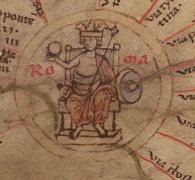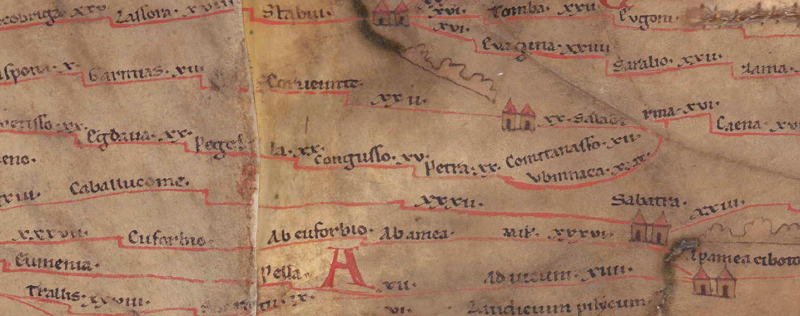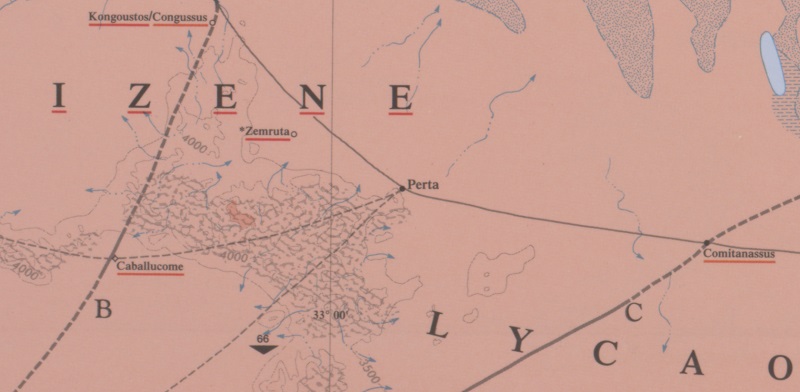
Tabula Peutingeriana – Single display of hits
| Toponym TP (renewed): | Petra |
| Name (modern): | Gimir |
| Image: |  To the image detail |
| Toponym before | XV Congusso |
| Toponym following | XX Comitanasso |
| Alternative Image | --- |
| Image (Barrington 2000) |
 |
| Image (Scheyb 1753) |
 |
| Image (Welser 1598) | --- |
| Image (MSI 2025) | --- |
| Pleiades: | https://pleiades.stoa.org/places/619237 |
| Area: | Asia Minor |
| Toponym Type: | Toponym, no Symbol |
| Grid square: | 9B1 |
| Toponym Color: | black |
| Vignette Type : | --- |
| Itinerary: |
|
| Alternative Name (Lexica): |
|
| Name A (RE): | Perta 2 |
| Name B (Barrington Atlas): | Perta (63 C4) |
| Name C (TIR/TIB/others): | Perta (TIB 4, 213) |
| Name D (Miller): | Petra |
| Name E (Levi): |
|
| Name F (Ravennate): |
|
| Name G (Ptolemy): | Πέρτα (5,4,10) |
| Plinius: |
|
| Strabo: |
|
| Dating from Toponym on TP: | Roman Imperial Period (2nd century) |
| Argument for Dating: | Der Name ist in der Literatur von Ptol. bis ins 12. Jh. n. Chr. überliefert. |
| Commentary on the Toponym: |
Namensform (verschrieben) nur hier überliefert. |
| References: |
Ballance, M. H.: Roman Roads in Lycaonia, Anatolian Studies 8 (1958), 223-234, hier: 224-228. |
| Last Update: | 24.08.2025 19:50 |
Cite this page:
https://www1.ku.de/ggf/ag/tabula_peutingeriana/trefferanzeige_en.php?id=1430 [last accessed on November 1, 2025]